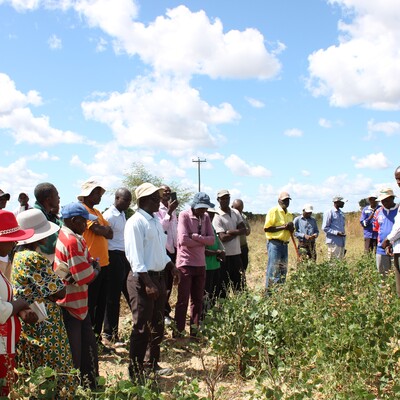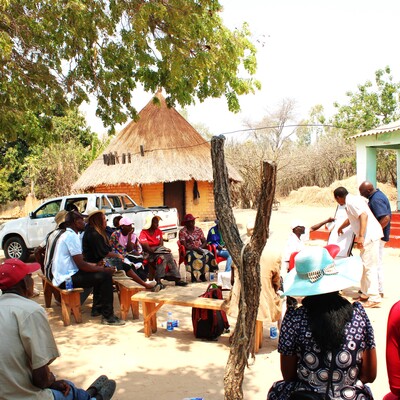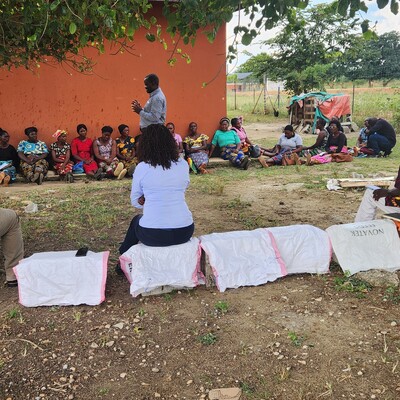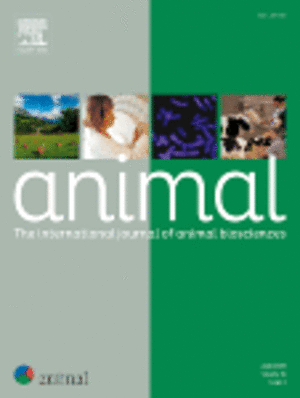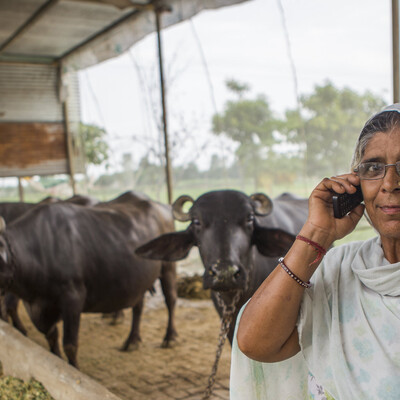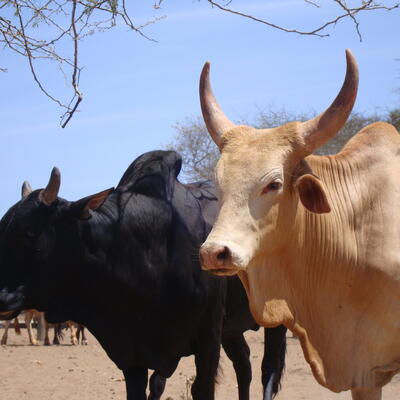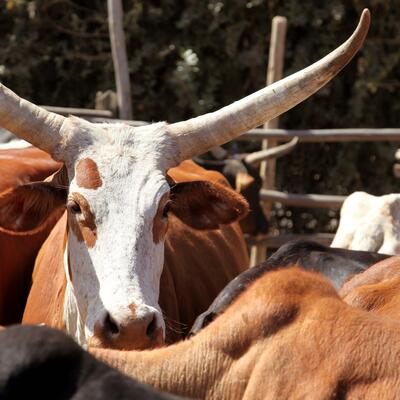
Scaling up cutting-edge feed and forage impact 15-fold over the next five years
120,000 farmers are connecting to feed and forage information and products through the consortium of Venture37, ILRI, Corteva Agriscience, and Forage Genetics International
The Feed and Forage team at ILRI have been supporting the Kenya NPA (Nourishing Prosperity Alliance) project for the past two years and this is now expanding through the NPA-FORAGE (Nourishing Prosperity Alliance - Forage for Animal Growth in East Africa) project.
The project started as an innovative coalition of agricultural firms, research institutions and non-governmental organizations that aims to increase productivity and incomes of small-scale dairy farmers through improved animal feeding, focusing on climate-resilient forages as a pathway to food and nutrition security and the advancement of women’s economic empowerment.
‘In just two years, the pilot project’s goal was to reach 5,000 farmers, but we surpassed that and were able to reach 7,500 farmers,’ said David Harvey, Venture 37, Group Director Technical Impact and Innovation.
One of the most significant costs to farmers, and the most significant factor governing livestock performance, is the feed that they eat. The goal of NPA-FORAGE is therefore to help improve the feed that these cattle are eating to ensure they receive the best nutrition possible, to help improve their efficiency and productivity.
‘To get here requires educating farmers on how to produce quality feed that they can provide their cattle,’ explained Chris Jones, Feed and Forage Development Program Leader at ILRI.
Jones and his team of researchers are growing new forage varieties to find those with the best nutritional makeup suited to the farming systems and environmental conditions. Their goals include helping dairy farmers:
Feed cattle the right amount
Create a balanced diet using the resources they have
Not waste unnecessary resources on commercial feed
ILRI is uniquely positioned to carry this out because as an international research centre, it can test and grow diverse varieties on their demo sites. However, ILIRI is not working alone. As a research institute, its role is to research potential new varieties and partner with other entities or businesses that supply these varieties to get these products to scale and to the market.
Farmers are creating a ripple effect after ILRI and Venture37’s project organization
The project organizer, Land O’Lakes Venture37, is dedicated to creating markets that allow farmers to produce as much food for people as possible, while ensuring that the farmer gets as much profit as possible. Venture37’s role is to facilitate the goal of NPA-FORAGE: to fill the gap in helping farmers learn what to plant, how to plant (what soil and water are needed), and connecting farmers to feed and forage seeds. The consortium is working alongside local partners to achieve these goals.
In late 2023, farmers, seed producers, Forage Genetics International (FGI), Corteva Agriscience, Venture37, and ILRI researchers gathered at Kapiti, ILRI’s research and conservation centre, to discuss current challenges and gaps in an NPA-FORAGE field day. The farmers present have been pioneers in planting some of the new seed varieties, and have had much success with their model farmer project.
‘I have trained 300 farmers in my neighboring farms in how to plant different seed varieties and how to make silage. This is having a ripple effect on the farmers in my community,’ said Lucy, one of the model farmers.
Model farmers like Lucy are identified, and tasked to share with their communities what successful seed varieties they plant. They do so through conducting meetings with peer groups and demo days to showcase what they’re planting and how they’re managing the forages. Lucy, along with another farmer, have educated over 600 farmers and hope to continue teaching others.
ILRI’s plots are striving for sustainability
In addition to creating nutrient-dense feed and forage varieties and looking at how to use these to support improved animal nutrition, NPA scientists are implementing sustainable farming practices where possible and recommending successful practices to farmers.
On the forages side, forage legumes at Kapiti have been intercropped with maize. This creates environmental benefits by the legume supplying essential nutrients through nitrogen fixation, reducing the requirement to apply fertilizer to the maize crop. In addition, the researchers are looking at the push-pull method (using 'push' plants to repel and 'pull' plants that attract pests from the maize crop) to decrease the populations of pests such as the fall armyworm.
What’s next
NPA-FORAGE wants to scale up big—in stage 2, they want to go from 7,500 to 120,000 farmers, across Kenya and Ethiopia, in the next five years. While this is only a fraction of the 1.8 million farmers in Kenya, the scaling is exponential and will be the starting point for even more to follow.
All of these practices are helping to showcase to dairy farmers what is possible in terms of types of forages to grow to increase the nutrition of their cattle, which can, in turn affect the nutritional makeup of milk. They are also exposed to more sustainable farming practices that will help them elongate their soil and environmental health.
Through this project and partnership, ILRI is working towards its mission to support smallholder farmers, and disseminate knowledge to farmers. Farmers have been very responsive to this information, but they want more and to reach more of their neighbours. With the goal to scale up and align with both farmers and ILRI, hopefully there will be more fruits from NPA-FORAGE farmer field days soon.






